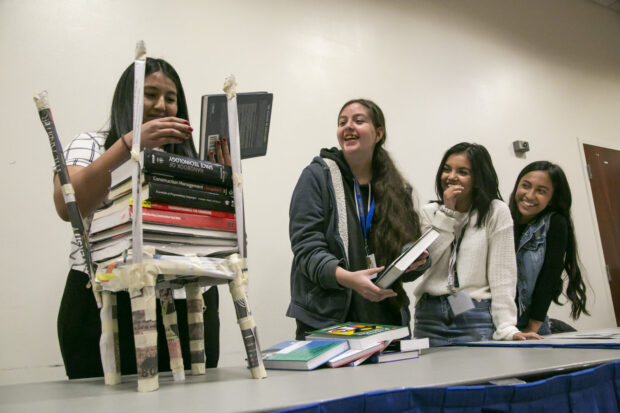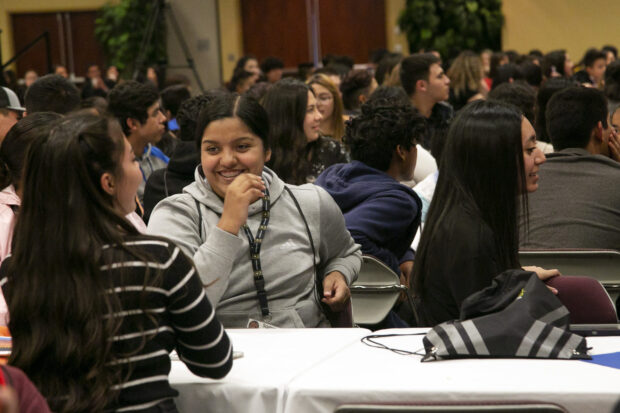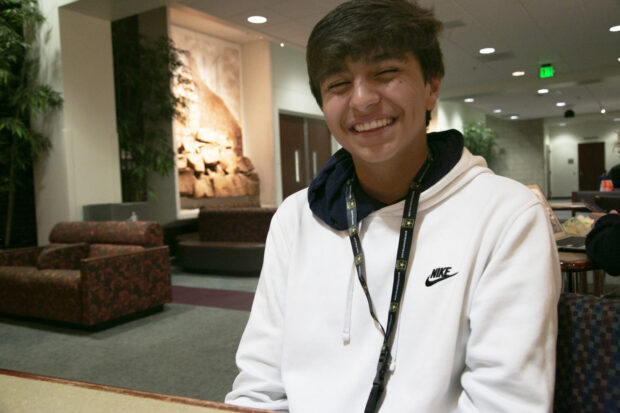The success of Latino students is going to be critical to Idaho’s economic future, according to national and local experts. But the state stumbles when it comes to ensuring all Latino students are successful in school and prepared for Idaho’s future workforce.The number of Latino students in Idaho schools has nearly doubled in the past two decades, rising to 18 percent of public school enrollment. But Latino student achievement in Idaho consistently lags behind state averages as evidenced by low average test scores among Latinos, few postsecondary degrees among Latino adults and a significant achievement gap between white and Latino youth.
The State Department of Education has set a long-term goal to improve Latino outcomes, in compliance with federal law, but left the strategy for reaching that goal to districts and schools. That plan has seen little success in its first two years.
Researchers, a business leader and a state official say improving Latino student outcomes is an urgent need, especially as Latino students graduate from Idaho’s schools and join the state’s workforce.
“If these students are not successful, then Idaho is not going to be successful,” said Rod Gramer, CEO of Idaho Business for Education.
Priscilla Salant, former director of the McClure Center for Public Policy Research said state trends suggest Hispanic Idahoans participate in the workforce at higher rates than non-Hispanics. And Idaho’s jobs of the future, Gramer said, will overwhelmingly require some sort of degree or credential.
“That puts even more pressure on our education system to make sure Hispanic kids aren’t left behind in school,” Salant said. “Because they matter tremendously to Idaho’s future workforce.”

Here’s what we know about Idaho’s Latino students
Idaho serves around 55,000 Latino children in the kindergarten-12th grade public school system. Most of these children and their families live in the southern part of the state, in agricultural areas and cities along the Snake River Plain.
Almost all of Idaho’s Latino youth were born in the United States. According to the U.S. Census Bureau, more than 96 percent of Idaho’s Latino children were U.S. citizens as of 2017, compared to about 70 percent of Latino adults.
Idaho’s Latino children are more than twice as likely to face poverty as white children, according to the Annie E. Casey Foundation. While the rate of Latino kids in poverty has generally declined in the last decade, roughly 29 percent live in homes with income below the federal poverty rate, compared to 11 percent of white children.
And, while the share of Latino students in Idaho schools has surged in the last two decades, growth has slowed recently. For the past two years, Latino students have made up about 18 percent of Idaho’s public school kids. In some districts – Wilder, Caldwell and Jerome – Latino students make up the majority of school enrollment.
Idaho’s Latino students are also unlikely to have teachers from similar backgrounds. Roughly 90 percent of the teachers in the 10 Idaho school districts with the highest percentage of Latino students are white, according to an Idaho Press report from earlier this year.

An achievement gap persists between white and Latino students
Idaho schools and universities have failed to help Latino students succeed at the same rates as white students for decades.
Recent data shows that:
- Only 26 percent of Idaho’s Latino students were proficient in math, compared to 49 percent of all white students.
- Only 13 percent of Latino students met both college readiness benchmarks on the SAT, compared to 35.7 percent of white students.
- Only 15 percent of Idaho Latinos hold a post-secondary degree, compared to 41 percent of non-Latino adults
Idaho has made some progress on improving Latino outcomes in many of these areas. However, white student outcomes have been increasing as well, which means the educational gap between the two groups persists.
The high school graduation rate is an exception. The Latino graduation rate has been climbing in recent years, while the graduation rate of white students has remained somewhat stable, gradually closing the gap.
In 2018, 76 percent of Latino students graduated, compared to 81 percent of white students.
Education is one of the top priorities for the Idaho Commission on Hispanic Affairs — a non-partisan state agency under the Governor’s Office.
Executive Director Margie Gonzalez said despite improvement among the state’s Latino students in a few areas, it feels like Idaho has been talking about the same problems for decades.
“We’re not seeing the needle move as much as we would like,” Gonzalez said.
Idaho EdNews compared standardized test scores (ISAT scores) for white students and Latino students to analyze whether students are achieving proficiency in math and English at an equal rate. The maps below illustrate how disparities between the two groups vary widely by school district. The darker the color on the map, the larger the gap between the two groups. Hover over a school district for more detailed information, and slide the bar in the top right corner to analyze data from different years.
The Idaho State Department of Education has specialized programs to help English learners and “migrant” students, whose families move frequently for work. These programs focus on helping disadvantaged students – the majority of whom are Latino – succeed in school and go on to higher education.
Roughly 30 percent of Idaho’s Latino students qualify for one of those two specialized programs, according to data provided by the Department of Education.
The state also offers an Advanced Opportunities program that supports Spanish speakers earning college credit by passing a language exam. Otherwise, SDE spokeswoman Kris Rodine said, “most SDE efforts are not specifically targeted at Latino students or other groups.”
Karlynn Laraway, director of Assessment and Accountability for the state, said addressing the academic performance of one specific group of students is a difficult thing to do on a statewide level, since Latino students likely have different needs in different communities. The department’s plan to improve Latino student achievement, she said, is to connect local school districts to the resources they need to serve kids.
“The work really happens in local schools and districts and communities,” Laraway said. “Our plan is to support our schools with what they need. They know what they need based on their population of students.”
The SDE set yearly targets to shrink the achievement gap by improving Latino student outcomes by 2022, in accordance with the federal Every Student Succeeds Act. The act was signed by President Barack Obama in 2015 and replaced the No Child Left Behind Act.
One goal is to improve Latino math scores 26 percent by 2022. Scores have fallen short of interim targets toward that goal two years in a row. Leaders hoped to see 9 percent improvement between 2017 and 2019. Instead, scores improved 2.5 percent.
Hispanic youth summit helps Latino students with college and career readiness
The Hispanic commission hosts annual Hispanic Youth Leadership summits to help educate students about college and possible career paths. More than 1,500 Hispanic students attended conferences in Boise and Twin Falls this October and competed for more than $3 million in scholarships.

The event is important for students like Enrique Lopez, a sophomore at Vallivue’s Ridgevue High, who feels like he’s had to navigate parts of his education on his own.
Lopez’ parents grew up in Mexico and don’t always know how to help him navigate the U.S. school system, he said.
He plans to be the first in his family to go to college and wants to study either creative writing or physics.
“I am excited because it’s a new experience. But I’m nervous because my parents didn’t go, so I don’t really know the process that comes with it,” he said. “That makes me kind of anxious.”
This story is part of the Latino Listening Project, an ongoing collaboration between the Idaho Statesman and Idaho Education News, focused on the educational outcomes of Latino students in Idaho. This effort is supported by the American Press Institute.
Reporters Sami Edge and Nicole Foy will be traveling the state to examine the problems — and possible solutions. Do you have an idea for them to explore or a school you think they should visit? Email [email protected] or [email protected].
Idaho Latino educators and students are also encouraged to share their stories and thoughts on our educator and student surveys.
